System Buyers' Guide: PCs for Under $1000
by Sean Hollister on February 12, 2010 2:00 AM EST- Posted in
- Guides
AMD Entry-Level PC
Even as Intel produces the fastest desktop processors in the world, it is competitor AMD that has become synonymous with value. Under the $125 price point that Intel has set with the Core i3-530, AMD reigns supreme in both performance and raw core count for every dollar spent. Because of that, for the first time in an AnandTech Buyer's Guide, you'll find us recommending a triple-core processor for an entry-level machine.
| AMD Entry-Level System | ||
| Hardware | Component | Price |
| Processor | AMD Athlon II X3 435 Rana (Tri-core 2.9GHz, 45nm, 3x512KB L2 Cache, Socket AM3) |
$75 |
| Cooling | CPU Retail HSF | $0 |
| Video | Onboard | $0 |
| Motherboard | ASRock M3A785GMH/128M AM3 Micro ATX | $77 |
| Memory | G.Skill Ripjaws 4GB DDR3-1600 F3-12800CL9D-4GBRL | $105 |
| Hard Drive | WD Caviar Blue 500GB WD5000AAKS | $54 |
| Optical Drive | Sony Optiarc Model AD-7240S-OB 24X DVDRW SATA | $28 |
| Audio | Onboard | $0 |
| Case | Cooler Master Centurion 5 CAC-T05-UW Mid Tower ATX | $55 |
| Power Supply | OCZ ModXStream Pro 500W ATX12V SLI Certified, CrossFire Ready, 80 PLUS Certified Modular Active PFC (before $25 Rebate) | $65 |
| Base System Total | $459 | |
| Display | ASUS VW193TR Black 19" 5ms Widescreen LCD (1440 x 900) | $120 |
| Speakers | Built-in Monitor | $0 |
| Input | Microsoft B2L-00045 Comfort Curve Black USB Keyboard and Optical USB Mouse - OEM | $22 |
| Operating System | Microsoft Windows 7 Home Premium OEM 1-Pack (for System Builders) | $105 |
| Complete System Total | $706 | |
| Plus Estimated Shipping (within Continental U.S.) | $717 | |
| Rebates | -$25 | |
| Bottom Line (less tax, if applicable) | $692 | |
And what a processor it is: the 2.9GHz Athlon II X3 435 Rana. Here's the 435 Rana slaughtering last year's value CPU choice, the Athlon X2 7750 BE:
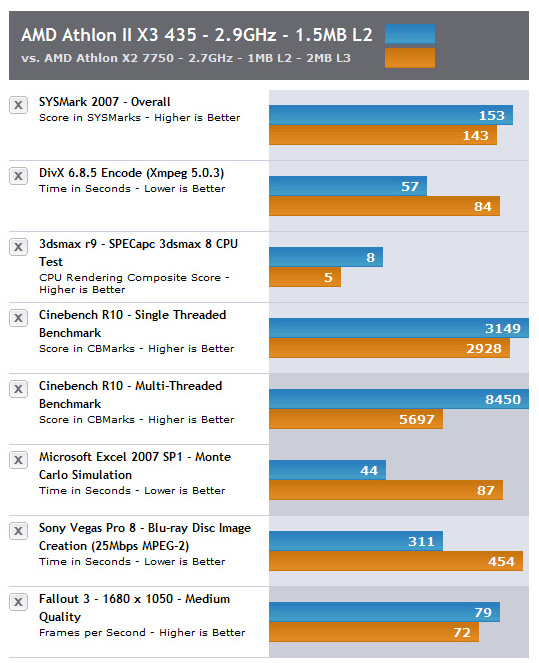
And here's the 435 Rana coming out ahead in every single benchmark against our choice for the Intel entry-level PC, the Pentium Dual-Core E5300:
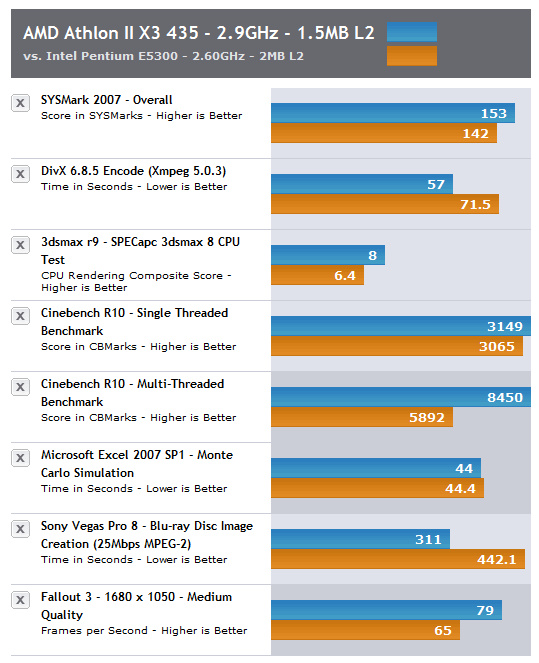
Positioned precisely at the sweet spot in AMD's lineup between the dual-core Athlon II X2s and the quad-core Athlon II X4s, the $75 Athlon II X3 435 Rana has the core count and clock speed to be the best of both worlds. It performs so admirably in both single and multi-threaded applications, in fact, as to give even low-end Phenom II CPUs a run for their money in certain benchmarks. Factor in low enough heat and power consumption that many report overclocking to 3.6GHz on air, and you have a practically perfect processor for budget enthusiasts.
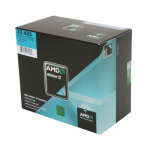 |
And because the 435 Rana is based on the Phenom II die, we just had to pair it with an ACC-capable motherboard. In case you're not familiar, AMD's tri-core chips actually aren't; they're quad-core CPUs binned as having a manufacturing defect in one core with that core consequently disabled. But if demand for a tri-core chip is high enough that AMD finds themselves having to disable perfectly good quad-core chips to sell them as tri-core instead… you just might be able to unlock that fourth core, and ACC (Advanced Clock Calibration) is your golden ticket.
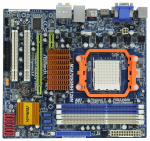 |
But ACC is hardly the best reason to buy the ASRock M3A785GMH/128M motherboard. The reason to buy the M3A785GMH is because for the bargain price of $77, it's one of the most full-featured Micro ATX motherboards we've seen for AMD chips. Based on the AMD 785G / SB710 chipset we favorably reviewed in August, the M3A785GMH is its most powerful interpretation—the one that comes with 128MB sideport of DDR3-1333 for enhanced video performance on its Radeon HD 4200 IGP and supports up to 16GB of DDR3-1600 system memory in four dual-channel banks. The SB710 Southbridge provides five SATA 3Gb/s ports supporting RAID 0, 1 and 10, while Realtek pulls double-duty providing 7.1-channel HD audio with their ALC888 chip and Gigabit Ethernet with their 8111DL NIC. VGA, DVI and HDMI video-out accompany an eSATA, combo PS/2, optical S/PDIF-out and four USB 2.0 ports on the rear panel, with headers for an additional six USB ports on the motherboard itself. Last but not least, a single PCIe x16, a PCIe x1 and two PCI slots appear in an excellent layout with three fan headers, an IDE slot and even a legacy floppy connector at the very bottom. If you don't feel you need the extra speed and future-proofing that comes with DDR3, you can easily shave off $12 by going with the practically identical $65 ASRock A785GMH/128M instead, which trades the Realtek ALC888 for VIA VT1708S 7.1-channel audio and an extra SATA 3GB/s port.
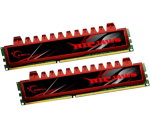 |
With both DDR2 and DDR3 memory prices the highest we've seen in recent memory, picking a set of fast, reliable yet inexpensive modules can be an exercise in futility. Be sure to shop around, because in all likelihood, there will be better and vastly different deals by the time you read this guide. But as of today, we believe the $105 G.Skill Ripjaws 4GB DDR3-1600 CAS 9 kit offers the best value for your money. It's true that regardless of brand and binning, the quality of memory modules varies widely, but G.Skill modules have an excellent reputation as of late, and these particular modules are designed to both run at low voltage (1.5v) and are reportedly excellent overclockers. As mentioned above, if you choose to go the DDR2 route you'll lose some overhead and future-proofing potential, but at a substantial savings of up to $30 if you choose low-cost DDR2 modules like the G.Skill DDR2-800 CAS5.
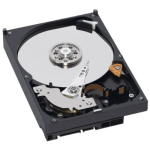 |
While the quality and reliability of magnetic hard drives increases year after year, we've found that actual hard drive capacity and performance is something of a commodity these days. Regardless of the manufacturer you pick today, an entry-level 500GB hard drive will cost you around $55 and offer the same performance as any of its brethren. The only exception to the rule is the WD Caviar Green, which tends to run slightly slower but quieter than its counterparts. Our current pick is the WD Caviar Blue, simply because of its widespread availability and Western Digital's stellar reputation.
Our choice for an optical drive remains the tried-and-true Sony Optiarc AD-7240S-0B, a SATA-connected 24X DVDRW with faster burning speeds and greater reliability than anything else in its price range. Though the price of Blu-ray readers has fallen considerably—the Lite-ON iHOS104-06 in particular retailing for only $60—Blu-ray is still a luxury for most budget boxes, its discussion better saved for our upgrade section on page 6.
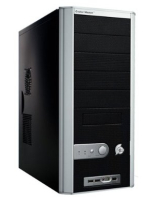 |
If we had to pick a single reason why low-end PCs get a bad rap, it would probably be the prevalence of cheap cases and even cheaper bundled power supplies. To combat these weaknesses, we chose the time-honored favorite Cooler Master Centurion 5 to house these budget PCs, and the OCZ ModXStream 500W PSU to power them. At $55, the Centurion 5 is a solid, stylish aluminum mid-tower with clean lines, few sharp edges, a pair of quality fans, a CPU air duct and a nearly tool-less design that makes installing drives and expansion cards quite easy. Meanwhile, the ModXStream 500W is a bona fide bargain at $40 after rebate, offering efficiency through both reduced power consumption (as certified by the 80 Plus efficiency rating) and a modular design that allows for reduced cabling and, by extension, greater airflow.
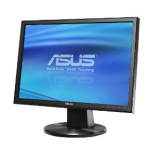 |
Though ASUS is known primarily as a manufacturer of motherboards, in recent years they've expanded their efforts greatly to include netbooks, sound cards and even low-cost monitors, each of which miraculously maintain the company's reputation for quality. We therefore have no reservations in recommending the $120 ASUS VW193TR, a 19" monitor with 1440x900 native resolution, DVI and VGA connectivity and a 5ms response time, all of which are more than acceptable for an entry-level screen at this price point. If you require a large desktop for productivity or intend to be viewing large amounts of HD multimedia content, however, you'll find bigger and better monitors in our upgrade section on page 6.










86 Comments
View All Comments
Taft12 - Friday, February 12, 2010 - link
Probably because double the cache (and a couple hundred MHz) is worth the $10 extra.Jaguar36 - Friday, February 12, 2010 - link
Could we get some power usage numbers on these setups? For the last cheap computer I built I think I've ended up paying more for the power to run it, than I paid for the system overall.FlyTexas - Friday, February 12, 2010 - link
Good job detailing the various parts and options.However, that is a lot of work to build something that will cost more than what you can just order from Dell and save all that trouble.
Yes, yes, the Dell is an OEM machine without the features and options you can play around with here, but really, if you're building a budget machine, you just want something that works well, not a super custom machine that you'll tinker with forever.
Right now, Dell is selling the following:
Inspiron 546
AMD Athlon II X4 630 (2.8GHz, 2MB)
Windows® 7 Home Premium, 64bit
20.0" Dell IN2010N HD Monitor
16X DVD+/-RW Drive
4GB Dual Channel DDR2 at 800MHz
750GB Serial ATA Hard Drive
Integrated ATI Radeon HD3200 Graphics
All for $599.
That is a faster processer, larger monitor, bigger hard drive, for $100 LESS than your custom computer.
And it comes pre-built, ready to use, with a warranty from a single company.
And if you want to play games, yes it has a 16x PCI-E slot to put a better video card in.
I would like to see an article here detailing what to order from HP/Dell/Etc. For example, if you don't need a monitor, the Dell Outlet is a great source for cheap computers.
Right now, in the Dell Outlet, you can get:
Inspiron 546
AMD Athlon II X4 630 (2.8GHz, 2MB)
Windows® 7 Home Premium, 64bit
16X DVD+/-RW Drive
6GB Dual Channel DDR2 at 800MHz
500GB Serial ATA Hard Drive
Integrated ATI Radeon HD3200 Graphics
For $389.
The Windows 7 alone is $105, that makes the hardware $284. Hard to beat that deal... That is for a Certified Refurbished machine, to be sure, however I've bought dozens of them over the past 3 years without any issues.
If you want to build a high end rig, you can do it for a lot less than Dell/Alienware will charge. If you want a budget rig, buy a Dell (or HP or whatever). Faster, for less money, and less hassle.
My 2 cents anyway.
Proud owner of a custom high end gaming rig and 10 Dell Vostro machines for everything else... because rolling my own is just work after the first one.
piasabird - Friday, February 12, 2010 - link
Dell is just So-So. It is not as junky as AMD, unless it is a junky AMD Dell.Windows 7 is priced $99.99 at www.directron.com
http://www.directron.com/gfc00599.html">http://www.directron.com/gfc00599.html
I couldnt tell if that includes shipping or not, so it may be about the same price.
Steele Phoenix - Friday, February 12, 2010 - link
I have done my own builds and bought budget computers from Dell as well. There are a couple issues that I really ran into:1) Video card MUST be only single slot. The 3 Dell's I have do not have room for a two slot width card. This is something that cannot be worked around without replacing the case. Requiring a single slot card makes it very difficult to upgrade video cards. Currently this will limit a user to a single 5770 option from HIS. All higher cards are two slot width.
2) Power supply must be replaced to support any video card that requires additional power. Once you do this the Dell warranty is technically void. You can still get support from Dell if you don't mention this but don't ship your computer back to them or ask a tech to come to fix something.
3) BIOS options are very limited.
4) External ports have very little options. No eSATA, Firewire etc.
Other than all of that your golden.
FlyTexas - Friday, February 12, 2010 - link
And this is why I'd like to see a complete article on build it yourself vs. OEM systems...1. Not always, there are mini-towers from Dell that will take a dual slot card. Not all of them, but more than you'd think. It isn't the dual slot that kills it, it is the length. However, I've put GTX9800+ cards into Dell's mini-tower cases just fine, and those are dual slot coolers. As for the AMD 5770, that card kicks the heck out of the 3200HD built in graphics these systems all come with. If you really want more than 5770 level graphics, you aren't building this level of system anyway. In my opinion, a 5850/5870 really needs a Core i5/i7 CPU to do it justice.
2. Not true, many Dell systems come with PCI-E power cables. The above GTX9800 cards require 2 of them. The Dell system had 1, and you can buy adapters to get a second one from the standard power cables. Works great.
3. Very true, you won't be overclocking the Dells...
4. True, but do you care on a $500 computer? Maybe, maybe not. It isn't hard to add either using a PCI or PCI-E 1x card to a Dell however.
Again, I'm not saying building your own is bad, I've built many of my own systems. I've also bought a lot of Dell's. They each have their benefits. Sometimes it just isn't worth the trouble to build your own. It all depends on your needs and what is important to you.
erple2 - Friday, February 12, 2010 - link
I agree with the vast majority of what you've said. Having said that, I can also see the additional value of buying your own components. Right now, to do a fairly substantial upgrade for me, I have to buy Motherboard, Memory and Processor (going from DDR2, Core2Duo to DDR3 and i5/i7) only. So my intermediate upgrade price is substantially lower than Dell (which, for the last 3 Dell's I've worked on, they still used a custom format Motherboard that was not attainable from, say, Newegg).However, if you're intermediate upgrades don't involve "just about anything", then there's not that much reason (at this price point) for buying something other than a pre-packaged system. Unfortunately, Dell's prices for warranties beyond the default 1 year is extremely cost prohibitive at this level (200+ dollars on a 600 dollar system)...
FlyTexas - Friday, February 12, 2010 - link
You are right about Dell's warranty upgrades beyond a year, they are expensive. I have never bought an extended warranty for a Dell desktop, and never needed one.However, I always buy 3 year warranties on my Dell laptops, and have used them more than once. The next day on-site service for something like a laptop is wonderful. Of course, spending $169 for a 3 year warranty on a $1,200 laptop makes sense. If it was a $500 laptop, I probably wouldn't. :)
Dell (and most big OEMs) actually do use a standard, the BTX form factor. You are correct, NewEgg doesn't sell motherboards in the BTX form factor, but NewEgg isn't the only place to buy stuff.
Google "btx motherboard Core 2" and click on shopping, you'll find something to use if you REALLY want to upgrade your 5 year old Dell. :)
But truth be told, what do you really save? If you have to upgrade the motherboard, CPU, RAM, etc. You're saving a case and a power supply, neither of which cost that much to begin with.
As someone else said, OEM systems aren't really meant to be upgraded, they are meant to be used for 3-5 years, then replaced with a new one. It would be interesting to compare spending $500 every 3 years compared to what some of us here spend upgraded every year. Heck, I've spent $500 on my last 2 video cards (the 8800GT, then the GTX260, they were $250 each when bought new), so I suppose it is all in how you look at it.
mm2587 - Friday, February 12, 2010 - link
while the big guys do offer some very competitively priced low end systems you do need to keep they also come with1) value ddr2 ram compared to high performance ddr3
2) a craptastic motherboard which has
a) no dvi port
b) no esata
c) no 7.1 sound
d) no optical out
e) probably no real bios options
3) a barely passable power supply
4) no side port memory and a weaker igp
I bet you could match the price of the new dell system if you went with lower end components then what was chosen. Its also completely unfair to compare new parts to refurb systems. You could drop the price of anandtech's system almost in half if you bout used parts.
FlyTexas - Friday, February 12, 2010 - link
Good points...1. DDR2 and DDR 3 cost about the same. Yes DDR3 is better going forward, however for such a basic system, does it really matter?
2. Dell's motherboards are generally made by Foxxcon, the same company that makes most of the fancy motherboards you already use. Believe it or not, there are not very many companies that actually make motherboards (or video cards for that matter). Dell's cheap boards are usually lean on features, but again this is a basic system.
2a. True, but for a 20" monitor, who cares? In any case, you'll have a DVI port if you upgrade the video card.
2b. Really? For a basic system we care about eSATA?
2c & d. Again, who cares... This is not a uber system, just a basic system. In my opinion, if you have a set of speakers to do 7.1 justice, you're spending a lot more on your computer than this.
2e. For sure, but again who cares, basic system remember?
3. The powersupply works fine, I've got GTX9800 cards running in 3 of these level systems and they don't complain, you don't need to spend $65 on a powersupply to get one that works.
4. The AMD 3200HD Graphics are not bad, better than most of what Intel provides. If you care about gaming, $50-100 fixes that right up.
Can you match the price of the Dell? Yes, but you have to drop everything down a bit, and you're still building it yourself...
From NewEgg:
Rosewill R2036-BK Black Computer Case 400W PS - $29.99
AMD Athlon II X4 630 2.8GHz - $101.99
ECS A780GM-M3 AM2+/AM3 Micro ATX Motherboard - $59.99
PQI POWER Series 4GB (2 x 2GB) DDR2 800 - $74.99
HITACHI Deskstar 500GB 7200 RPM - $54.99
SAMSUNG 22x CD/DVD Burner Black - $19.99
Acer X203H Black 20" 16:9 5ms LCD Monitor - $124.99
Windows 7 Home Premium OEM - $104.99
Rosewill Keyboard & Mouse Combo - $10.98
Shipping on all that is $15.06
Total price - $597.96
The same price as the Dell, and you have to build it, install Windows, and support it yourself. The Dell comes ready to use out of the box, gives you a place to call and get service for a year, and generally just works.
I'm not knocking building your own computer, for many people it makes sense. I've built more than I can count over the years. All I'm saying is that for this level of computer, for basic computer tasks, for someone who isn't a heavy upgrader or gamer, an OEM system works just fine with fewer headaches.